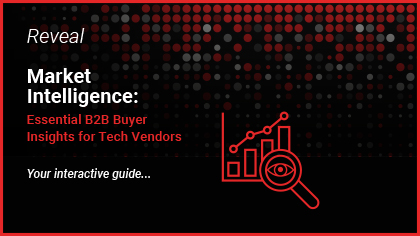The digital revolution is well and truly underway – but that’s hardly news, especially if you read our previous article, Is B2B Marketing Ready for Programmatic Advertising?
It’s also well documentated how the programmatic revolution continues to gather momentum in the B2C space, whilst progress in the B2B sphere has been more glacial, due in part to smaller budgets, niche audiences and constraints around good quality data.
Perhaps what’s less observed is how B2B is on the cusp of change, as increasing sophistication in Data Analytics and Attribution Modelling is helping justify larger B2B media investment. This article looks at how the future of B2B digital marketing is carving out its own ecosystem.
We asked one of our in-house programmatic and RTB specialists, Jasdeep, for his expert opinion…
Forecasted Trends for 2019
Research company eMarketer suggests there will be continued (albeit less drastic) growth in UK Programmatic buying until 2019, going from £1.99 billion ($2.69 billion) in 2015, to £3.39 billion ($4.58 billion) in 2017, and £4.52 billion ($6.10 billion) by 2019.
However there remain a number of wide ranging and significant challenges; spanning from Brand Safety and Ad fraud, to a lack of alignment around definitions, to supply-chain transparency concerns.
Additionally, the implementation of the GDPR (General Data Protection Regulation) in May 2018 has, and will continue to have broad-reaching implications across all areas of the digital media industry, and Programmatic buying is no exception.
In today’s mobile-first, always-on world, brands need to be more ‘joined-up’ in their communications in a multi-channel way, whilst ensuring data compliance.
The Adoption of B2B Programmatic
‘The early-bird may get the worm – but it’s the second mouse that gets the cheese’. That’s the benefit of not diving into a technology simply because you can. B2B marketers have instead chosen to largely hold-back on Programmatic Buying because technology and data didn’t yet facilitate their need to influence specific groups of business decision-makers while at their most receptive.
Adoption however is growing, on both the advertiser and publisher side, for example ‘Audience Extension’, (the practice of allowing an advertiser to serve ads to a publisher’s audience on websites other than their own) continues to become a standard strategy for advertisers. Furthermore ‘data-driven’ approaches such as CRM Onboarding, IP Targeting and Audience Targeting are now far more likely to receive approval and investment.
We are finally seeing real innovation take place in the B2B space, with CRM and Marketing Automation systems beginning to integrate with Data Management Platforms (DMPs); a centralized system for collecting and analyzing large sets of data originating from disparate sources. Oracle has now fully integrated Bluekai and Salesforce has fully integrated Krux.
Arguably however the biggest news in the B2B Mergers & Acquisition space is the news that software behemoth Adobe is to acquire leading B2B Marketing Automation business Marketo for a staggering $4.75 billion, placing it in a strong position in Enterprise Marketing as it looks to compete with Salesforce, Oracle and SAP, signaling how serious the San Jose giant is about the B2B Marketing space.
All of these solutions are allowing B2B Marketers to run data-driven messaging within integrated multi-channel programs, to deliver precise messaging and content to tightly defined audiences across the Buyer / Decision-Maker journey.
Progress still to be made…
Crucially however, good quality data remains a challenge, and whilst it’s possible to reach for example IT Decision Makers, targeting in more sophisticated ways than this can prove challenging.
Furthermore, whilst the industry has adopted a standard of at least 50% viewability, this is clearly a far from ideal scenario. It is for this reason that today’s tech savvy digital marketers should be aiming for 70% viewability, since this is far more likely to drive engagement metrics.
As with consumer marketing, storytelling is also an important element of today’s B2B marketing toolkit. As a result, it is key that your audience(s) are engaged at each stage of the content funnel, in a way that both makes sense and resonates with them. Dynamic creative can play a pivotal role in ensuring that this is achieved, and should not be considered exclusive to the consumer marketing space.
Best Practice
This is why the approach to programmatic buying in B2B needs to revolve around coupling high-quality 1st party data-driven messaging with content rich, contextually relevant environments, in a transparent and verifiable way.
This approach facilitates the engagement and targeting of historically difficult to reach audiences, with messaging created specifically for them. Demanding B2B audiences are evolving, and expect to be engaged with best-in-class thought leadership across platforms and devices.
Consequently, the marketers mind-set should move from a media-centric view towards an audience-centric one, using 1st Party data to power Programmatic buying that reaches key Business Decision-Maker audiences across the entirety of the internet. This creates the possibility of reaching them beyond simply the publisher vertical sites.
This has resulted in hyper efficient media-buying, which when coupled with personalized messaging and content, enables best-in-breed programmatic buying for B2B marketers.
To understand more about how programmatic features in our product set, visit InboxNEXUS here








